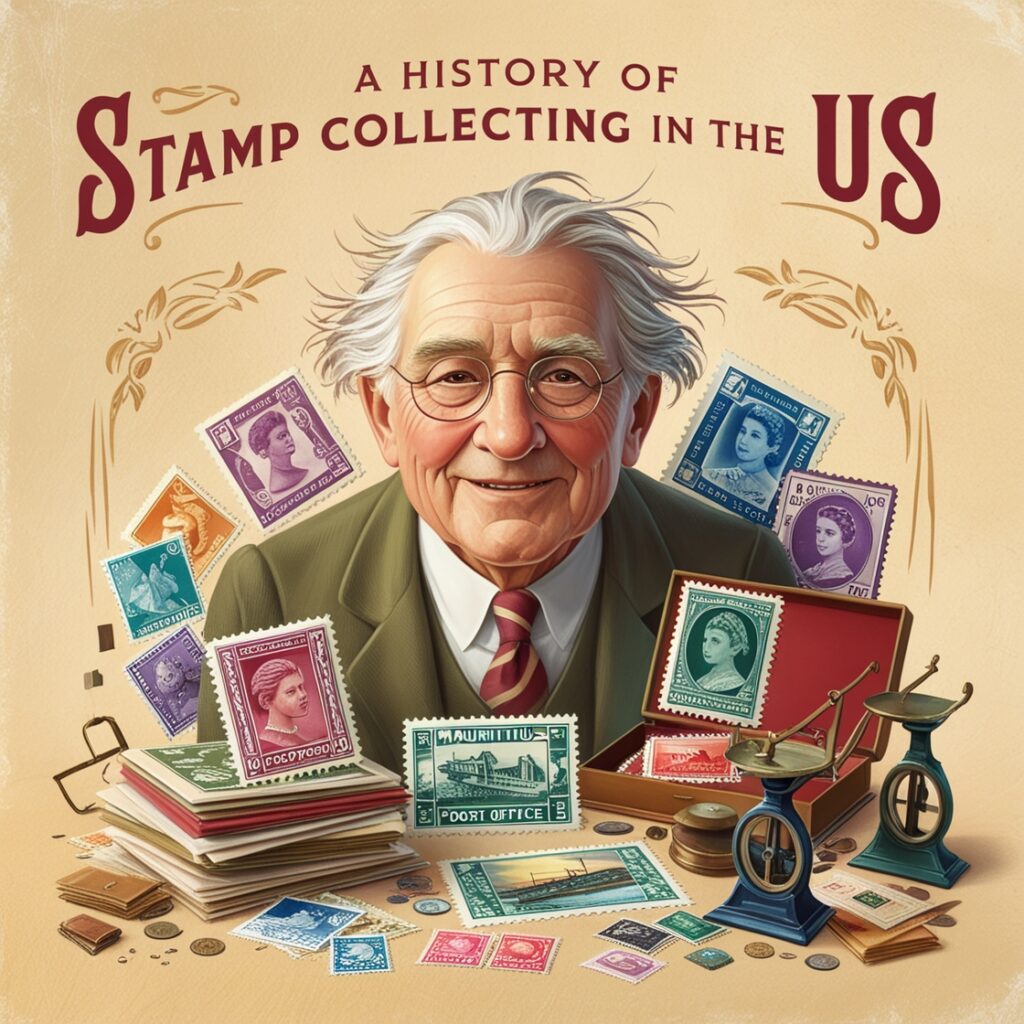Stamp collecting, or philately, is often called “the hobby of kings,” and it has a long, rich history in the United States. From its humble beginnings in the mid-19th century to becoming a cherished pastime for millions, stamp collecting has evolved alongside the nation itself. This blog post will take you on a journey through the history of stamp collecting in the United States, exploring its origins, milestones, and the community that continues to thrive today.
The Origins of Stamp Collecting in the US
Stamp collecting in the United States began shortly after the introduction of postage stamps in the mid-1800s. The world’s first adhesive postage stamp, the Penny Black, was issued in Great Britain in 1840. The United States followed suit with its first stamps in 1847, featuring Benjamin Franklin and George Washington. As the postal system expanded, so did the variety of stamps, sparking interest in collecting these small, intricate pieces of art.
The early collectors were often well-to-do individuals, given that stamps were still a relatively new invention, and communication by mail was not as widespread or accessible as it is today. However, as postal services grew and stamps became more common, the hobby spread across different social classes.
The Growth of Philately in the Late 19th Century
The late 19th century was a golden age for philately in the United States. The introduction of new and diverse stamps, such as commemorative issues, further fueled the hobby. The 1870s and 1880s saw the formation of the first philatelic societies in the United States, including the American Philatelic Society (APS) in 1886. These societies provided a platform for collectors to share their passion, trade stamps, and learn more about the hobby.
Stamp exhibitions became popular during this period, with the first major exhibition held in New York City in 1889. These exhibitions showcased rare and valuable stamps, attracting collectors from around the country and helping to solidify stamp collecting as a serious and respected hobby.
The Early 20th Century: A Stamp Boom
The early 20th century saw a boom in stamp collecting, particularly during the 1930s. The Great Depression led many to seek inexpensive hobbies, and stamp collecting provided an affordable and enjoyable pastime. The U.S. Post Office Department, recognizing the popularity of the hobby, began issuing more commemorative stamps, which became highly sought after by collectors.
During this period, stamp collecting was promoted through various means, including stamp albums, which were sold in department stores and by mail order. These albums were often marketed to children, introducing a new generation to the joys of philately. The famous “Hobby of the Kings” tagline was popularized during this era, further elevating the status of stamp collecting.
The Mid-20th Century: Philately’s Golden Era
The post-World War II era is often considered the golden age of philately in the United States. The economic prosperity of the 1950s and 1960s allowed more people to indulge in hobbies, and stamp collecting experienced a significant surge in popularity. Stamp clubs flourished across the country, and the American Philatelic Society grew rapidly, becoming a central hub for U.S. collectors.
This period also saw the rise of stamp dealers and auctions, making it easier for collectors to acquire rare and valuable stamps. The introduction of new technologies, such as color printing and perforation, added to the variety and appeal of stamps. The U.S. Post Office Department continued to issue a wide range of commemorative stamps, including series dedicated to historical events, famous Americans, and cultural icons.
The Late 20th Century: Challenges and Adaptation
The late 20th century brought challenges to the world of philately. The rise of electronic communication and the decline of traditional mail led to a decrease in the use of postage stamps. As a result, fewer people were exposed to stamps in their daily lives, leading to a decline in new collectors.
Despite these challenges, the philatelic community adapted. The advent of the internet revolutionized stamp collecting, allowing collectors to connect with each other, trade stamps, and access information more easily than ever before. Online auctions and marketplaces provided new opportunities to buy and sell stamps, and digital resources made it easier for collectors to research and authenticate their collections.
Philately in the 21st Century: A Thriving Hobby
Today, stamp collecting remains a popular hobby, though it has evolved significantly. While the number of casual collectors may have decreased, dedicated philatelists continue to thrive. The American Philatelic Society and other organizations remain active, hosting events, publishing journals, and providing resources for collectors.
Modern stamp collectors often focus on specialized areas, such as collecting stamps from specific countries, historical periods, or themes. The hobby has also embraced technology, with digital tools and apps helping collectors manage and catalog their collections.
The U.S. Postal Service continues to issue stamps that appeal to collectors, including limited-edition releases and collaborations with artists and cultural institutions. These stamps often commemorate contemporary events and figures, ensuring that stamp collecting remains relevant in the modern world.


33 year old casual stamp collector from the UK!
